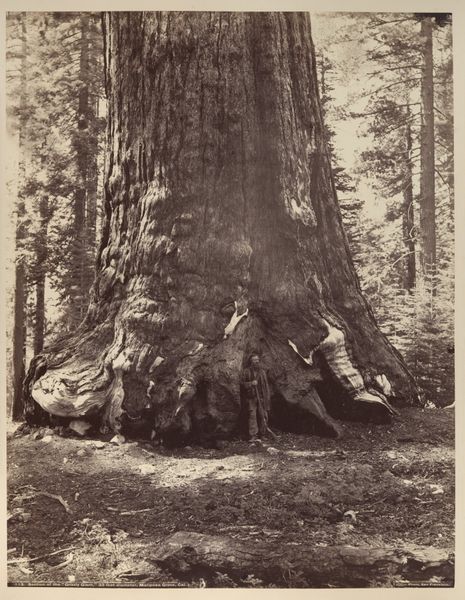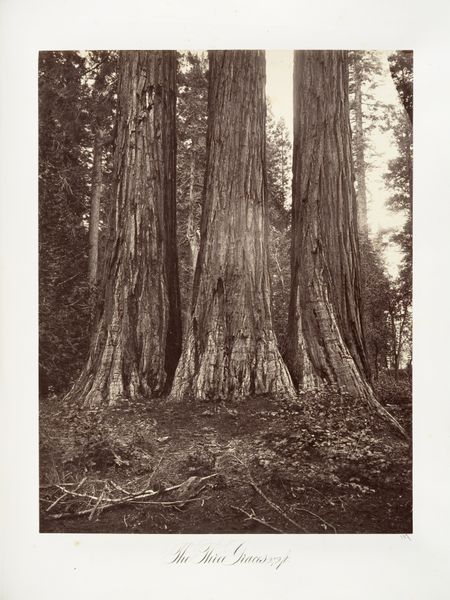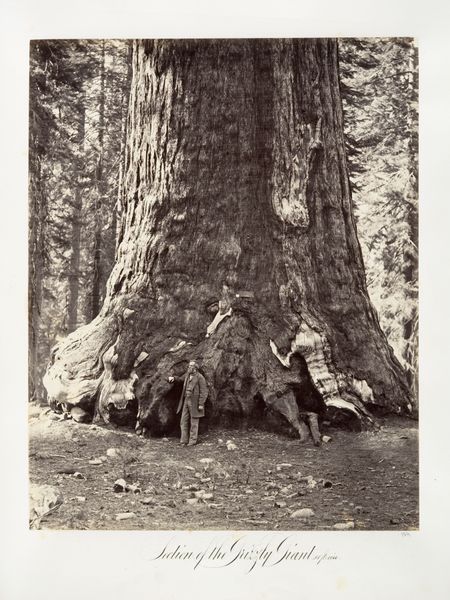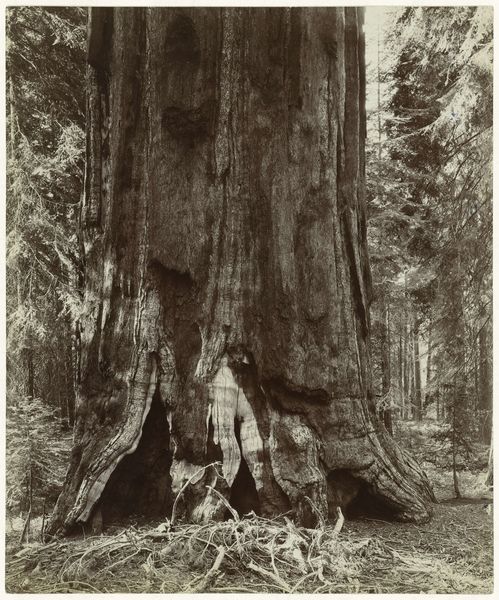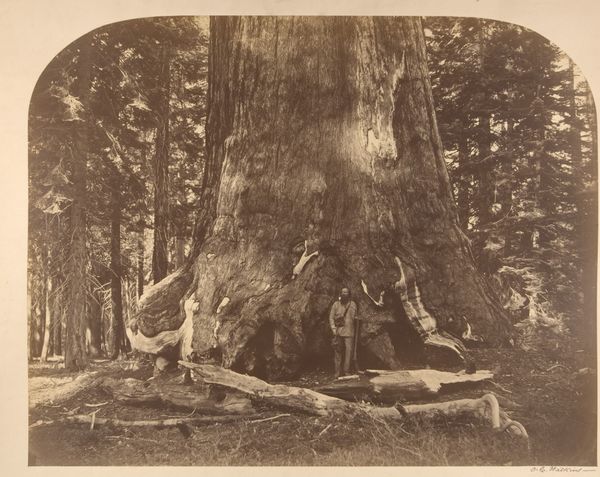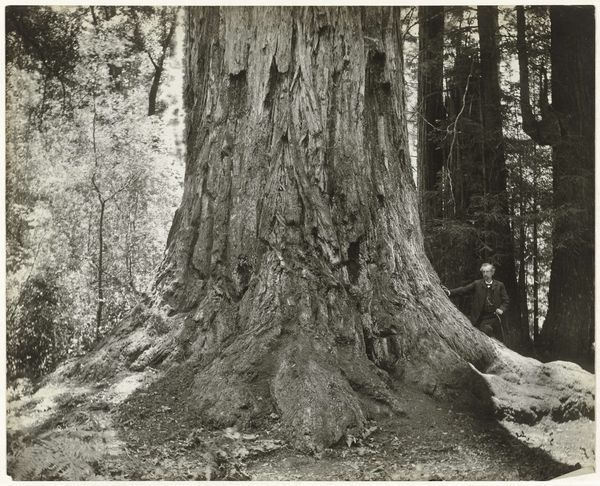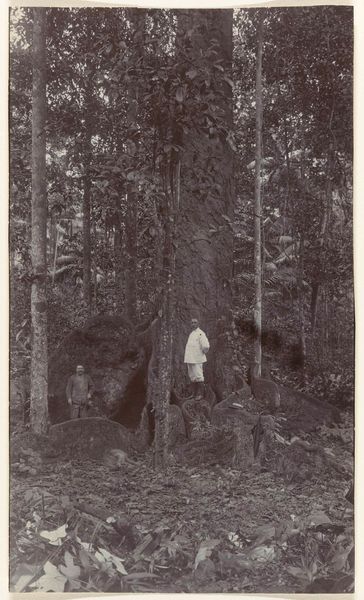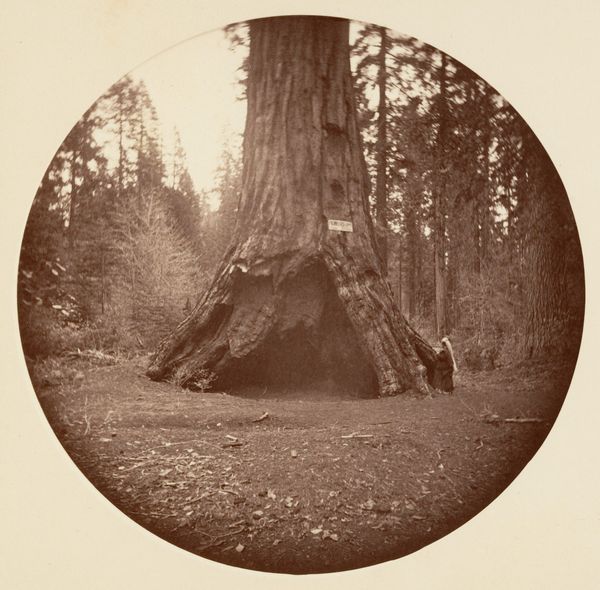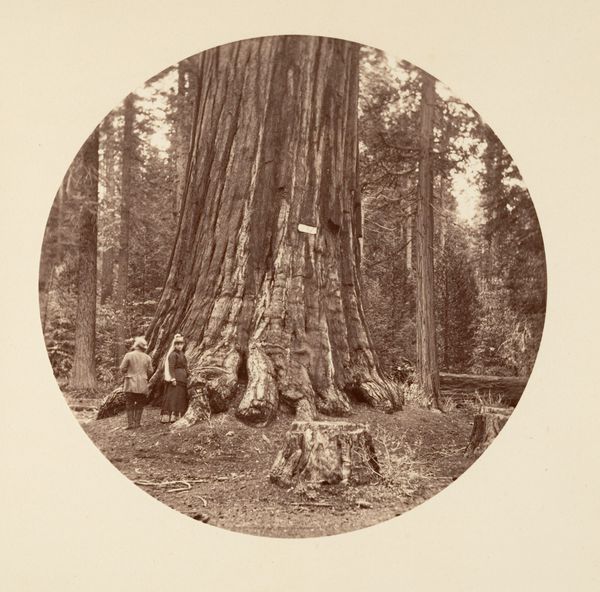
Copyright: Public Domain
Carleton Watkins made this photograph, "Mother of the Forest," using the wet plate collodion process, a popular technique in the 19th century. Watkins coated a glass plate with a light-sensitive emulsion right before taking the picture. This process required a portable darkroom tent where he could develop the plate immediately after exposure. This was no mean feat! Look closely, and you can see the remarkable detail captured by this method, from the rough bark of the giant sequoia to the figure seated at its base, giving scale to the enormity of the tree. The materiality of photography at this time played a crucial role. Watkins not only documented the landscape, but also the ambition of industry and infrastructure that placed nature as a resource to be extracted. The felling of such a massive tree speaks volumes about human impact on the environment and the changing perception of nature in the face of industrial progress. The photograph is more than just a picture; it's a document of a specific moment in time.
Comments
No comments
Be the first to comment and join the conversation on the ultimate creative platform.

